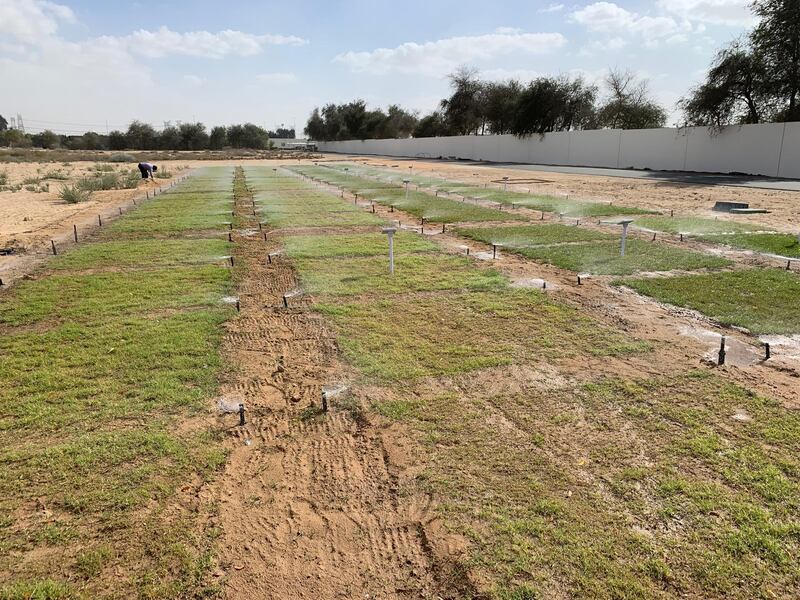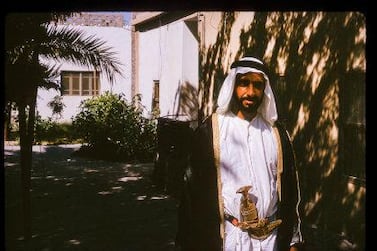A Norwegian technology company that received a grant from Expo 2020 Dubai said it could cut the amount of water needed to irrigate grass in the UAE by 50 per cent.
Desert Control Middle East said its "liquid nanoclay" was particularly effective in growing grass in extremely salty, sandy and arid conditions.
Liquid nanoclay is a mixture of water and clay that attaches itself to sand particles after it is sprayed on the ground
, preventing water and nutrients from running through the soil and lowering the salt content.
The company said some of the benefits included greater yields and larger crops, while the nanoclay also ensured precious water resources were used more efficiently.
The company spent a decade researching the product and conducted field tests across the world. It also worked with farms in Al Ain and Dubai's International Centre for Biosaline Agriculture, a non-profit research centre supported by the government, and tested its technique on models of parks and golf courses in the emirate.
It also received a grant from the Expo to help its research into the country's grass.
"We found 40 to 50 per cent of water savings on the two types of grass used for the project in which we replicated a Dubai municipality park and a golf course
, and we got even better grass growth versus traditional methods," Atle Idland, managing director of Desert Control Middle East, said.
He said it was crucial to increase awareness across the region of more efficient ways to irrigate salty and arid land.
"You have difficulty doing large-scale farming in the UAE because of the salt content but our results show a positive effect of decreasing salinity levels. The liquid nanoclay pushes the salt down below the root zone area," Mr Idland said.
The research project with the ICBA was the result of a global innovation grant programme run by the Expo that provided up to $100,000 (Dh367,320) to each initiative.
Desert Control Middle East was among 70 innovators from 42 countries that received grants from the Expo for projects that could benefit the region and countries across the world.
"In a world facing a climate crisis, Desert Control's work with its ingenious liquid nanoclay has the potential to make a lasting difference that could be applied across the globe," said Yousuf Caires, senior vice president of Expo Live, the arm of Expo 2020 Dubai responsible for these projects.
News of its successful research with the ICBA came after the World Day to Combat Desertification and Drought last Monday, an annual event backed by the United Nations that champions countries working to increase crop yields and food production.
In a project in Al Ain last year, the company used its liquid nanoclay technique to help grow carrots, cauliflowers, sweet peppers and okra, while recording water savings of about 40 per cent.
"The UN has recommended action points that include water management and water saving, and this is where new technology can have the biggest impact in changing the soil structure," Mr Idland said.
"This is what the UN is looking at as possible action to stop the deserts from expanding."
Groundwater is scarce in the UAE and is being used much more rapidly than it is being replenished.
About 71 per cent of all water used in the country is used in agriculture, forestry and landscaping.







